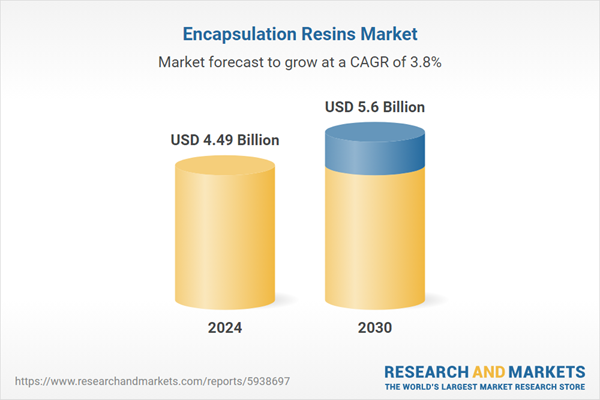Epoxy Resins is the fastest growing segment, Asia-Pacific is the largest regional market
Speak directly to the analyst to clarify any post sales queries you may have.
10% Free customizationThis report comes with 10% free customization, enabling you to add data that meets your specific business needs.
Key Market Drivers
The accelerated growth of electric vehicles and automotive electronics significantly propels the encapsulation resins market. As the automotive industry transitions towards electrification and advanced driver-assistance systems, there is an increasing demand for robust encapsulation solutions to protect sensitive electronic control units, sensors, and power electronics from harsh operating conditions, including extreme temperatures, vibration, and moisture. Encapsulants ensure the long-term reliability and performance of critical components in these sophisticated vehicle systems. According to the International Energy Agency (IEA), in June 2024, the Global EV Outlook 2024 estimated that electric car sales could reach approximately 17 million in 2024, representing about one in five cars sold worldwide, demonstrating the escalating integration of complex electronic assemblies requiring high-performance protective materials.Key Market Challenges
The inherent complexity and elevated costs associated with developing new resin formulations present a significant impediment to the growth of the Global Encapsulation Resins Market. Formulating these specialized polymeric materials to meet increasingly stringent performance requirements for advanced and emerging applications necessitates extensive research and development cycles. This process involves intricate material science, rigorous testing protocols, and often requires specialized equipment, all of which contribute to prolonged development timelines and substantial financial investment.Key Market Trends
The market for encapsulation resins is significantly influenced by the increasing focus on sustainable and eco-friendly resin formulations. This trend is driven by evolving environmental regulations, corporate sustainability objectives, and growing consumer preferences for products with a reduced environmental impact. Manufacturers are actively developing bio-based resins, formulations with lower volatile organic compound emissions, and materials that offer pathways for recyclability or responsible end-of-life management. According to a survey by IPC International, a global electronics association, published on March 18, 2025, 59% of respondents expect their companies to increase sustainability efforts in 2025, with printed circuit board and contract manufacturers anticipating the greatest growth in these initiatives. This highlights a collective industry movement towards more environmentally conscious manufacturing practices in the encapsulation sector.Key Market Players Profiled:
- Henkel AG & Co. KGaA
- Hitachi Ltd.
- Huntsman International LLC
- H.B. Fuller Company
- Acc Silicones Ltd (CHT Silicones)
- BASF SE
- The Dow Chemical Company
- Fuji Chemical Industry Co Ltd
- Shin-Etsu Chemical Co Ltd.
- Robnor ResinLab Ltd.
Report Scope:
In this report, the Global Encapsulation Resins Market has been segmented into the following categories:By Resin Type:
- Epoxy Resins
- Polyurethane Resins
- Silicone Resins
- Others
By End User:
- Automotive
- Consumer Electronics
- Industrial
- Telecommunication
- Others
By Region:
- North America
- Europe
- Asia-Pacific
- South America
- Middle East & Africa
Competitive Landscape
Company Profiles: Detailed analysis of the major companies present in the Global Encapsulation Resins Market.Available Customizations:
With the given market data, the publisher offers customizations according to a company's specific needs. The following customization options are available for the report.Company Information
- Detailed analysis and profiling of additional market players (up to five).
This product will be delivered within 1-3 business days.
Table of Contents
Companies Mentioned
The companies profiled in this Encapsulation Resins market report include:- Henkel AG & Co. KGaA
- Hitachi Ltd.
- Huntsman International LLC
- H.B. Fuller Company
- Acc Silicones Ltd (CHT Silicones)
- BASF SE
- The Dow Chemical Company
- Fuji Chemical Industry Co Ltd
- Shin-Etsu Chemical Co Ltd.
- Robnor ResinLab Ltd.
Table Information
| Report Attribute | Details |
|---|---|
| No. of Pages | 185 |
| Published | November 2025 |
| Forecast Period | 2024 - 2030 |
| Estimated Market Value ( USD | $ 4.49 Billion |
| Forecasted Market Value ( USD | $ 5.6 Billion |
| Compound Annual Growth Rate | 3.7% |
| Regions Covered | Global |
| No. of Companies Mentioned | 11 |









